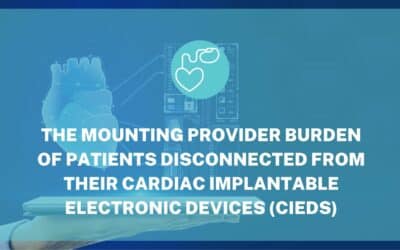The first implantation of a pacemaker in a human occurred in 1958. Since then, the technology behind permanent cardiac rhythm management has steadily evolved, enabling a variety of implants known collectively as cardiac implantable electronic devices (CIEDs). Today, CIEDs are the standard of care for various cardiac arrhythmias, and researchers estimate that 1.2–1.4 million of these devices are implanted annually worldwide. And experts predict that number will continue to increase in years to come.
Along with continued miniaturization and increased battery longevity, one of the most significant technological advancements in CIEDs has been the addition of remote monitoring capabilities. When equipped with remote monitoring devices, CIEDs can transmit data that allows healthcare providers to keep a close eye on not only their patients’ cardiac health but also how well the device is functioning. This level of vigilance has been shown to reduce the time to detect clinical events, improving survival rates and reducing hospitalizations linked to arterial arrhythmias. Remote monitoring also alleviates the data burden on cardiac patients, improving their quality of life. Traditionally, remote monitoring of implants occurs via radio frequency (RF) communication, but increasingly, CIEDs are integrated with Bluetooth technology and smartphone applications.
Read the full article on HIT Consultant.
By Arnaud Rosier, CEO of IMPLICITY®.

